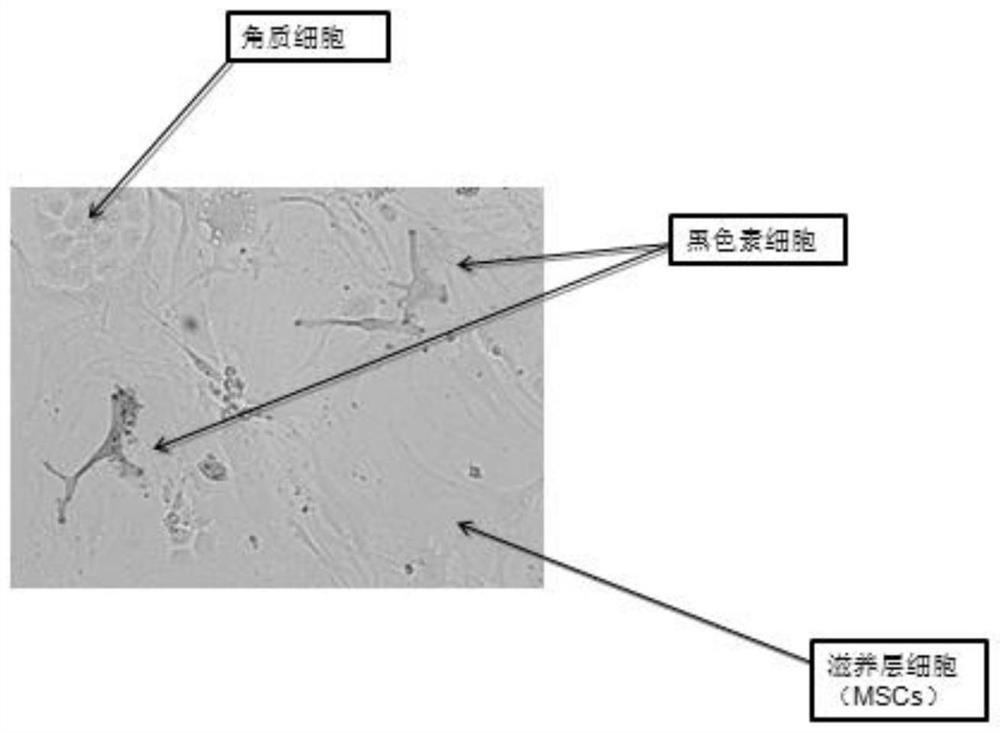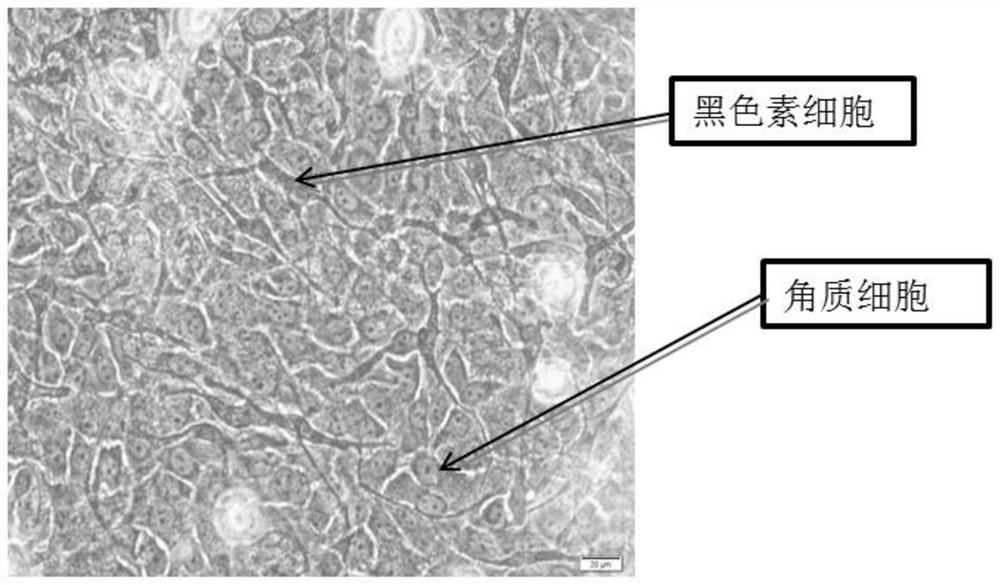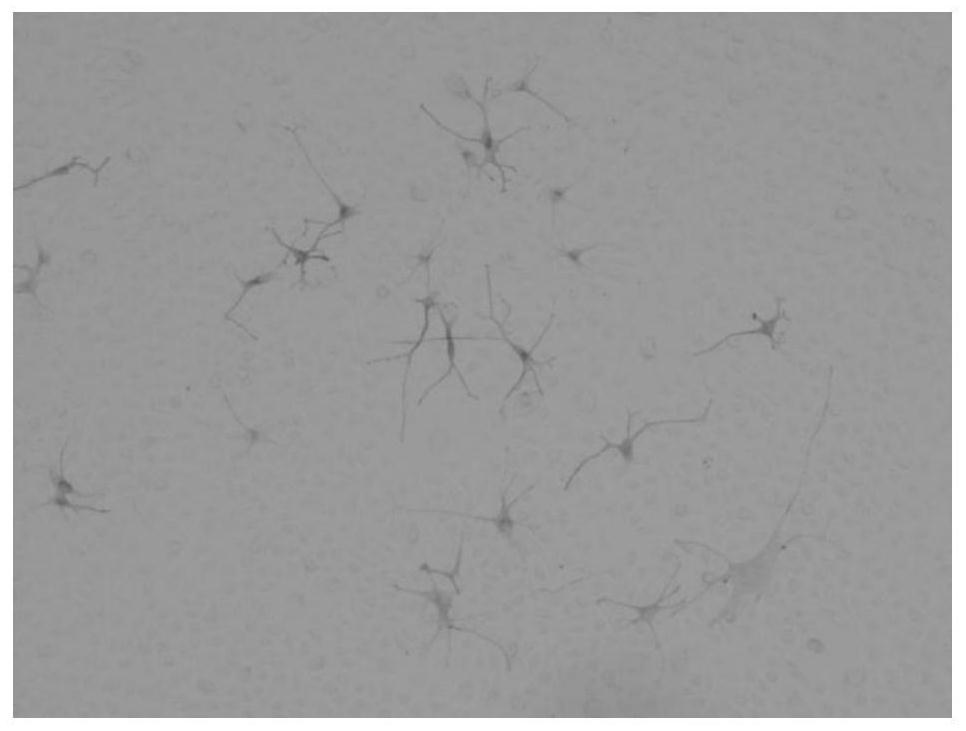A kind of culture method and culture medium of autologous tissue engineered epidermis
A tissue engineering and culture method technology, applied in the field of cell culture, can solve the problems of creating wounds, increasing damage, and high cost, and achieving the effects of promoting cell maturation and differentiation, accelerating peeling speed, and reducing damage
- Summary
- Abstract
- Description
- Claims
- Application Information
AI Technical Summary
Problems solved by technology
Method used
Image
Examples
Embodiment
[0035] A kind of culture method of autologous tissue engineered epidermis of the present invention comprises the following steps:
[0036] 1. Pretreatment of epidermal tissue 1: Take normal epidermal skin 2cm*2cm, wash it several times with DPBS containing antibiotics, cut it into small pieces of about 5mm, add 10ml Dispase II separation enzyme, digest at 4°C for 17h, and obtain the cultured Umbilical cord mesenchymal cells.
[0037] 2. Plating of trophoblast cells: Prepare the temperature-sensitive hydrogel on the culture plate for 24 hours, and use the cultured umbilical cord mesenchymal cells as trophoblast cells by 2*10 4 / cm 2 , pre-seeded onto thermosensitive hydrogel-coated culture plates.
[0038] 3. Epidermal tissue pretreatment 2: Remove the epidermal tissue with Dispase II separation enzyme and wash it with DPBS 3 times, use toothed curved tweezers to peel off the epidermal layer, transfer the epidermal layer to a centrifuge tube, wash with DPBS, cut it into piece...
PUM
 Login to View More
Login to View More Abstract
Description
Claims
Application Information
 Login to View More
Login to View More - R&D
- Intellectual Property
- Life Sciences
- Materials
- Tech Scout
- Unparalleled Data Quality
- Higher Quality Content
- 60% Fewer Hallucinations
Browse by: Latest US Patents, China's latest patents, Technical Efficacy Thesaurus, Application Domain, Technology Topic, Popular Technical Reports.
© 2025 PatSnap. All rights reserved.Legal|Privacy policy|Modern Slavery Act Transparency Statement|Sitemap|About US| Contact US: help@patsnap.com



